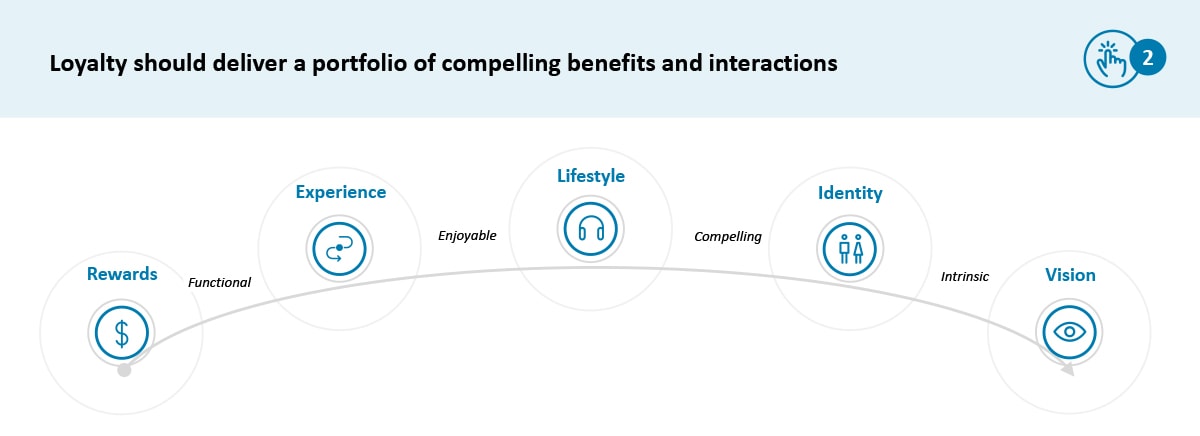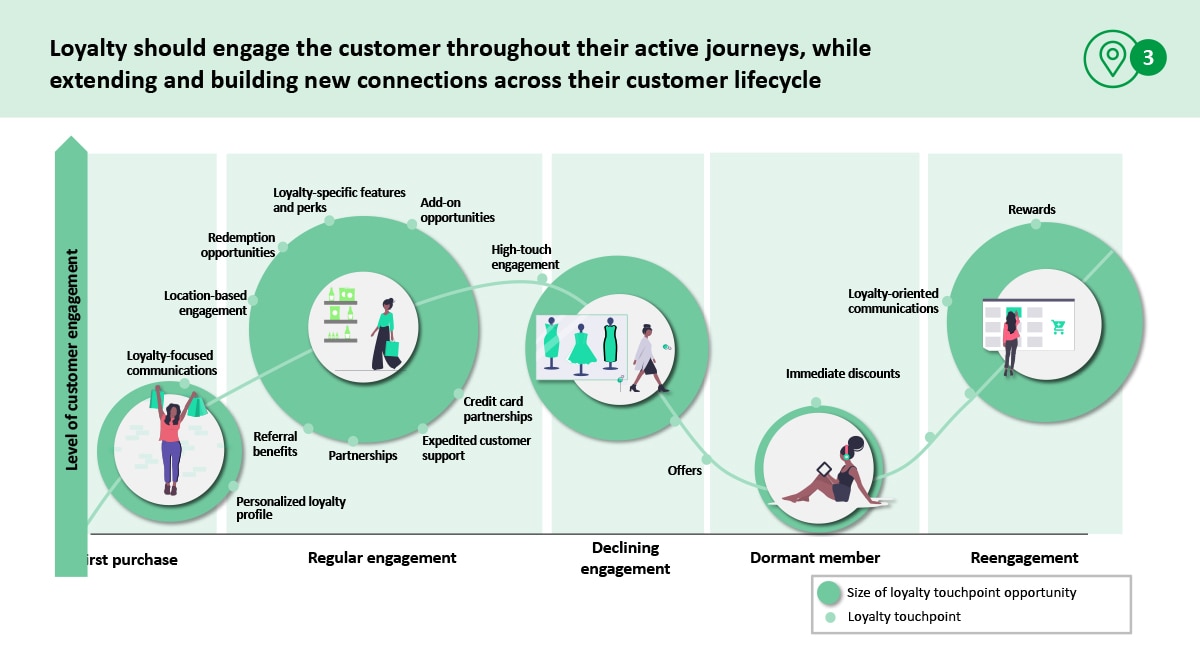Evolving travel industry marketing and loyalty programs has been saved

Perspectives
Evolving travel industry marketing and loyalty programs
How brands can balance both customer and business values
Customer loyalty programs can help organizations differentiate their travel and hospitality companies' marketing efforts and build deep relationships with customers. Explore five ways to evolve customer loyalty programs and align customers, employees, and partners on a set of shared values and outcomes.
Explore content
- Challenges impacting loyalty programs and the customer loyalty landscape
- Our beliefs about customer loyalty programs
- Five ways to evolve customer loyalty programs
- More insights from Deloitte + Skift
- Get in touch
Challenges impacting loyalty programs and the customer loyalty landscape
Customer loyalty programs have proliferated and become more complex in recent decades. Four fundamental challenges influence today’s travel industry marketing and loyalty environment:
- Consumer: Consumers are more connected and attention-starved than ever before, pressuring players to differentiate and connect to consumers in more personalized ways.
- Competition: Proliferation of brands and travel loyalty programs makes it more difficult to create differentiated experiences as nontraditional competitors continue to gain share.
- Configuration: Many brands have jumped in without an intentional approach to evolve customer loyalty programs over time; as a result, programs have lost their competitive advantage and become stale.
- Climate: COVID-19 is putting trust and confidence to the test; this crisis is driving different behaviors and expectations as consumers engage with traditional brands in nontraditional ways.
Standing out in today’s travel industry marketing environment starts with defining loyalty as an implicit or explicit agreement between a consumer and brand to enter into a relationship that is mutually beneficial in a variety of forms over a period of time.
Our beliefs about customer loyalty programs
Grounded in our deep experience in travel industry marketing, informed by our understanding of the marketplace, and with an eye to the future, we believe loyalty should:
Drive a specific customer behavior that corresponds to a specific value to the business |
As part of their travel industry marketing strategies, many leading loyalty players start by clearly defining success metrics and articulating the consumer behaviors they want to drive to deliver on those value drivers; only then do they design a travel loyalty program to incentivize those behaviors.
Program elements defined by your financial, customer, and brand priorities
- Loyalty ambition: What is our primary business goal for our loyalty offering?
- Business value driver: What key metrics will we use to define and quantify the success of the new offerings?
- Targeted segment: What customer segments will we target to maximize value generation?
Program elements defined by the beliefs and behaviors of current and future customers
- Desired behaviors: What customer needs and behaviors along the path-to-purchase must we influence?
- Loyalty features: What new customer loyalty program features will best serve our loyalty ambition and unlock business value?
Program element defined by your capabilities, assets, and partnerships
- Go-to-market approach: What channels and partners will we leverage to effectively bring the offering to market?

Deliver a portfolio of compelling benefits and interactions |
A successful portfolio of compelling benefits and interactions can differentiate one customer loyalty program from the rest. Determining what consumers care about and offering benefits across the spectrum of functional, enjoyable, compelling, and intrinsic value can drive short-term purchase intent while building long-term emotional brand connection.
Travel loyalty program portfolio elements include:
- Rewards: Offer points, cashback, or other immediate benefits for spending with the brand.
- Experience: Gamify the purchase experience or offer exclusive sales and engagement opportunities.
- Lifestyle: Hold events or provide access to content that embodies customers’ hobbies and life choices.
- Identity: Build a community of like-minded customers to engender a collective identity.
- Vision: Entwine your customer loyalty program with causes that align with your mission and that your customers care about.
Engage members across the spectrum using a range of rational and emotional benefits, some of which could be delivered through various partner models.

Engage the customer throughout their active journeys, while extending and building new connections across their customer life cycle |
Loyalty programs cannot feel like a “bolt-on” to the customer experience—they should be thoughtfully integrated into travel and hospitality companies' marketing, adding to the experience itself. This can require a deep understanding of the customer journey—from the first purchase through to dormant activity and re-engagement—and the lifetime experience of a customer.

Effectively engage employees and other partners |
Engaging employees and partners can enhance their emotional connections to the brand and encourages them to deliver the best experience to customer loyalty members. This model can work best when customers, employees, and partners align on a set of shared values.
Employee ecosystem
Employees are the human face of your customer loyalty program. Creating loyalty differentiation and driving impact can require brands to engage employees in the delivery of their loyalty offering.
- Education and empowerment: Teach employees about the loyalty program, and empower them to deliver an enhanced experience to elite members.
- Rewards: Reward employees with cash, loyalty program perks, or other incentives when they deliver loyalty to your customer (e.g., sign up a new member).
- Participation: Create a pathway for your employees to participate in your loyalty program, either through a specific program designed for them or through enhanced access to the customer-facing program.
Partner ecosystem
The partner ecosystem can elevate the equity of the customer loyalty program by ensuring seamless delivery and making members feel cared for across their entire journey, not just in their direct interactions with a single brand.
- Capability partners: Integrate with technology, service, and data providers that enable end-to-end delivery and management of the program.
- Business model partners: Operate upstream or downstream within the same value chain (e.g., credit card providers, retailers) and help to unlock new revenue streams.
- Experiential partners: Share similar consumers and/or operate horizontally across the same customer journey.
Creating loyalty differentiation within travel and hospitality companies' marketing and driving impact requires brands to extend beyond traditional channel partners to provide consumers with more holistic offerings.
Be delivered in a design-led, ongoing, and evolving model |
Programs that are “living”—meaning continually enhanced and supported by a cross-functional operating model and an adaptable technology platform—can create the best outcomes for both consumer and brand.
Delivery mindset principles:
- Data-driven: Guide and deliver loyalty enhancements by leveraging a fact-based, continuous test-and-learn methodology.
- Cross-functional: Construct the right operating model to coordinate efforts across functions and create seamless delivery of customer experiences, no matter the touchpoint.
- Customer-oriented: Align loyalty objectives and features to deliver on evolving consumer needs, behaviors, and expectations across physical and digital touchpoints.
- Continuously reprioritized: Balance consumer needs, business priorities, and execution ability to prioritize, develop, and scale customer loyalty program features.
More insights from Deloitte + Skift
Read the other articles in the Deloitte + Skift series on elevating the human experience in travel industry marketing.
|
How security, privacy, and trust can help travel brands offer a more human experience |
|
How can travel brands remain human in a digital-first world |
Recommendations
Human experience: At the heart of learning, living, connecting, and business loyalty
The shifting landscape of consumer trends in travel and hospitality






